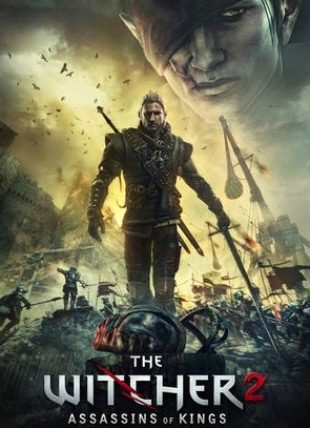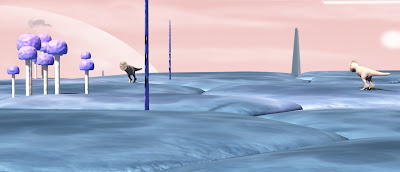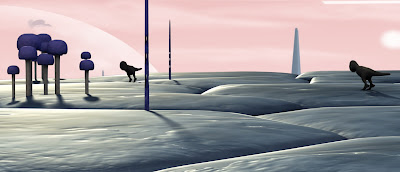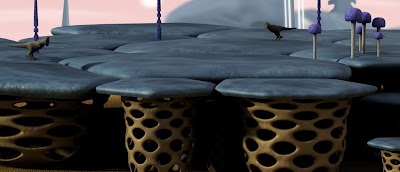The animatic has gone through four and a half iterations before it achieved the perfection it is now.
There's so much wrong with that sentence but I'll start by defining what an animatic is. The animatic is the script in the form of drawings, drawings which are taken usually from the storyboards and put into a loose edit to ascertain the timings for each scene, shot, movement, and get a feel for the pacing and structure required throughout the film. So with that intention I turned my months of storyboarding into an animatic in a single day, it was such a relief to be done with drawing. So I thought. Then there were the numerous edits, tweaks, and revisions from all sides.
If you only have time to watch one, watch the last one.
Animatic 1.5 features the most extended version of the original cut with the inhaler scene and other bits and pieces, things that added to Leonard as a character but didn't enhance the plot. They had to go. Also a foley scratch track from Jon Bernhardt that really grounds the visuals.
Then off the back of lots of feedback I added a scene which made Leonard's exodus more imperative by having his winch sabotaged, making him directly effected.
Then more cuts and shuffling happened, and I added more appropriate music plus foley cobbled from Jon's sound effects.
I'd love it to be double the length to allow the story to play out at a more naturalistic pace with its bits and pieces that flesh out Leonard as a character but as it is I might even make a brutal 2 minute animatic after all this in order to prioritise shots and ascertain what is completely necessary in order for us to have a complete film to hand in, as opposed to a complete story.
That was a horrible blog post. Short and functional. I shall return soon with pretty brain renders, flowery language, and hopefully some videogame prose as I have coursemates and podcasts to plug. Until then:
A touching and comical piece of anecdotal game criticism on Skyrim and its characters, one in particular.
An article that recognises the importance of what certain games are doing with narrative..
A great series of tutorials on linear work flow in Maya and Mental Ray and lighting.
There's so much wrong with that sentence but I'll start by defining what an animatic is. The animatic is the script in the form of drawings, drawings which are taken usually from the storyboards and put into a loose edit to ascertain the timings for each scene, shot, movement, and get a feel for the pacing and structure required throughout the film. So with that intention I turned my months of storyboarding into an animatic in a single day, it was such a relief to be done with drawing. So I thought. Then there were the numerous edits, tweaks, and revisions from all sides.
If you only have time to watch one, watch the last one.
Animatic 1.5 features the most extended version of the original cut with the inhaler scene and other bits and pieces, things that added to Leonard as a character but didn't enhance the plot. They had to go. Also a foley scratch track from Jon Bernhardt that really grounds the visuals.
Then off the back of lots of feedback I added a scene which made Leonard's exodus more imperative by having his winch sabotaged, making him directly effected.
Then more cuts and shuffling happened, and I added more appropriate music plus foley cobbled from Jon's sound effects.
I'd love it to be double the length to allow the story to play out at a more naturalistic pace with its bits and pieces that flesh out Leonard as a character but as it is I might even make a brutal 2 minute animatic after all this in order to prioritise shots and ascertain what is completely necessary in order for us to have a complete film to hand in, as opposed to a complete story.
That was a horrible blog post. Short and functional. I shall return soon with pretty brain renders, flowery language, and hopefully some videogame prose as I have coursemates and podcasts to plug. Until then:
Pixel Propaganda
A touching and comical piece of anecdotal game criticism on Skyrim and its characters, one in particular.
An article that recognises the importance of what certain games are doing with narrative.
A great series of tutorials on linear work flow in Maya and Mental Ray and lighting.



























